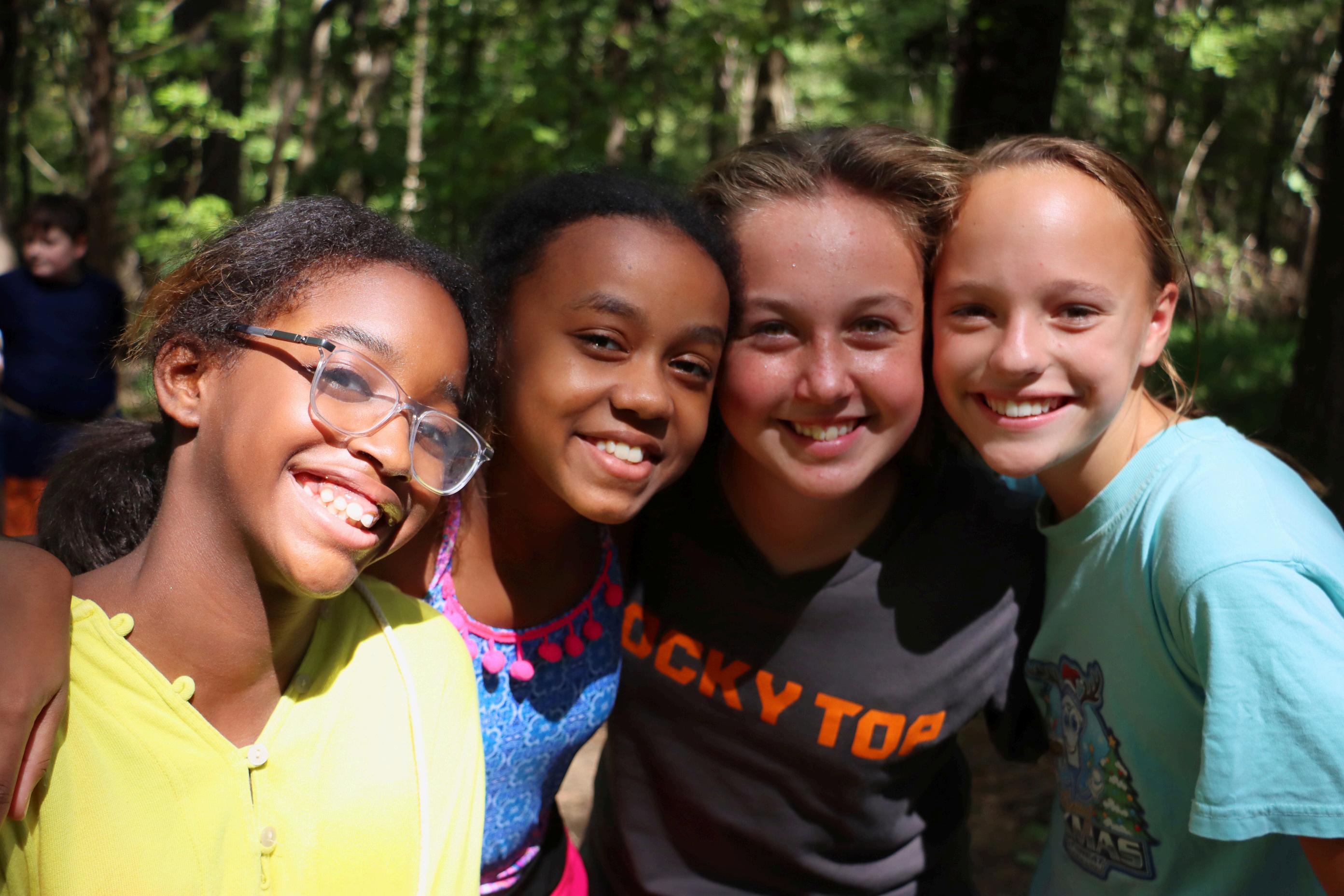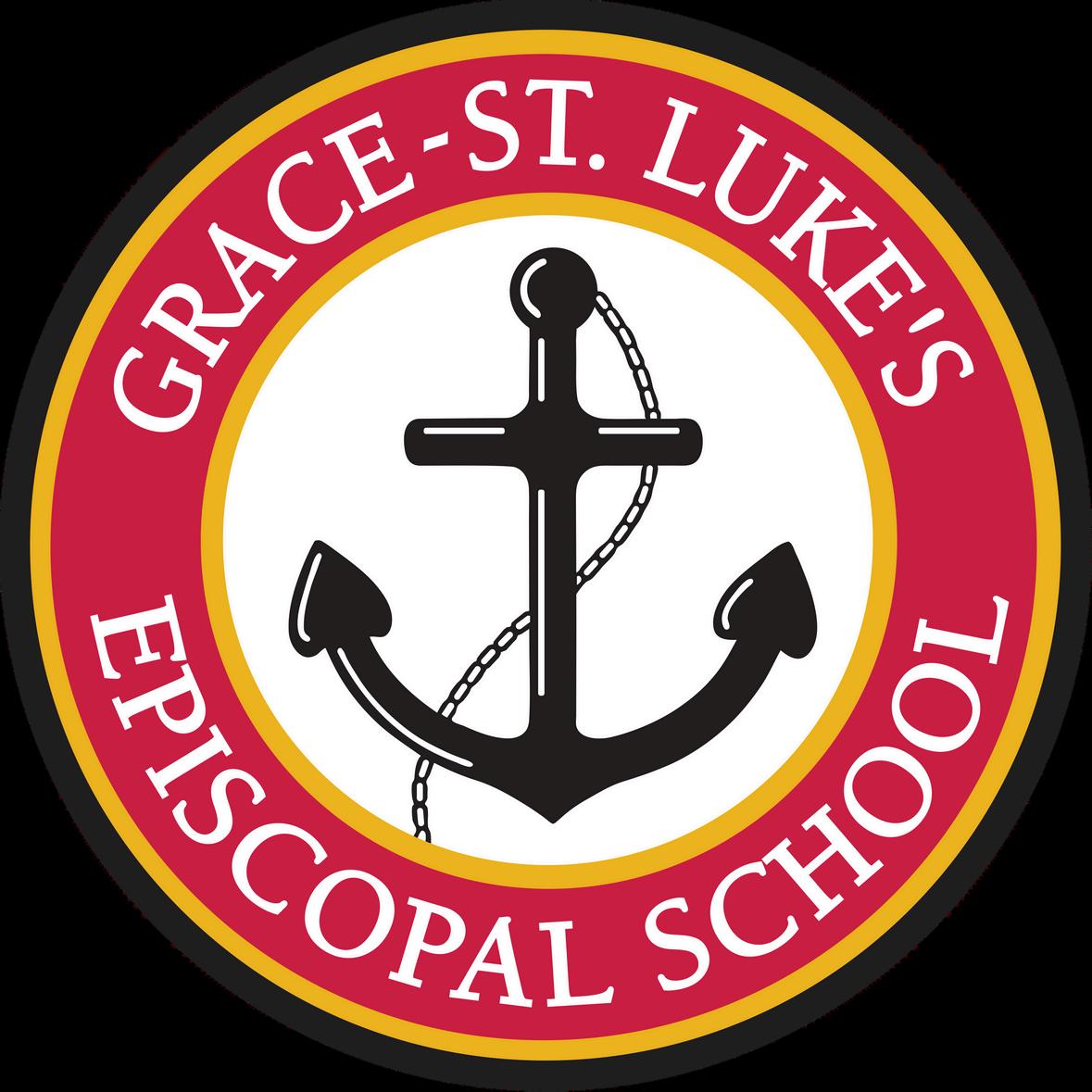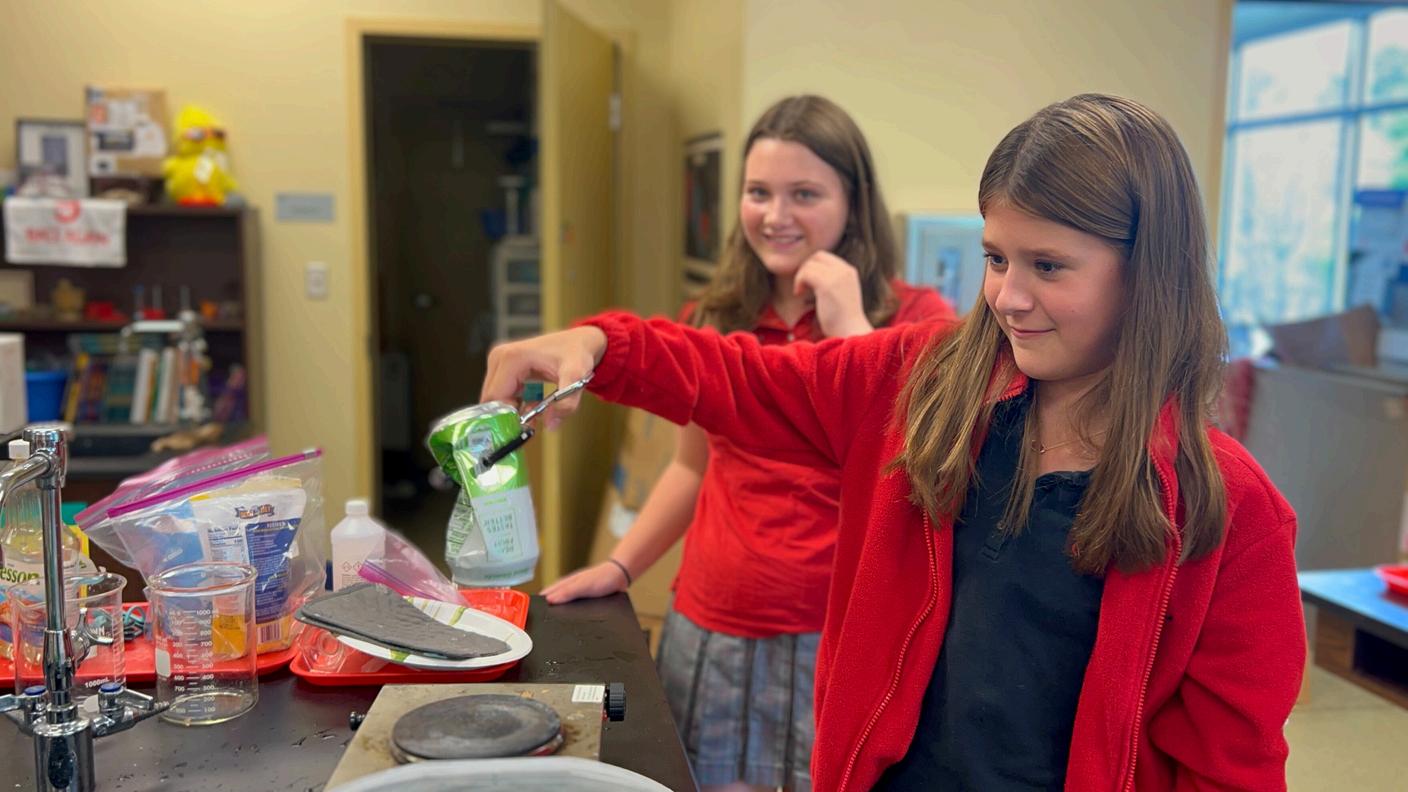6TH GRADE PROGRAM OF STUDY
2025-26 School Year



2025-26 School Year


A sixth grade Luker will continue to hone skills in written and oral communication in the forms of literary analysis and creative writing Students will read a wide variety of both fiction and non-fiction texts with the themes of coming of age and fairness as they develop an historical perspective while improving their comprehension skills. Students will analyze short stories for characterization, plot, and theme. Sixth graders will have developed skill in identifying parts of speech, types and parts of sentences, and the basics of writing conventions, including proper capitalization and punctuation. Sixth graders will learn the research process as they produce an MLA-style research report as their capstone essay.
A sixth grade Luker will read (both independently and through listening) a variety of thematic texts, both fictional and non-fictional, developing both fluency and comprehension.
Exit Outcomes
Develop an appreciation for themes relevant to a 21st century world and an eye toward critically examining historical texts
Develop an understanding of and begin to use the vocabulary of literary terms, including elements of plot, characterization, and theme in order to further enhance appreciation of literary works
Compare and contrast two literary works
Determine the theme and central ideas of a text
Identify sensory details
Identify the narrative point of view
Identify similes and metaphors
Identify hyperbole and personification
Identify a variety of literary devices in poetry
Experiences that Support Learning
Collaborative discussions
Flexible groupings to better individualize instruction
Small group instruction
Independent reading and writing
Hands-on, multi sensory approach
Shared Reading
Interactive read aloud
Apply reading for meaning skills
Project work
STAR Reading assessment
Accelerated Reader (A/R) testing

A sixth grade Luker will write frequently on a variety of topics with an emphasis toward providing evidence from the text in reading responses. They will undergo the writing process from developing an idea to drafting, revising, and finally publishing written work. They will develop writing beyond the single paragraph, paying attention to the organization of ideas and developing sentence fluency.
Begin to integrate appropriate literary quotes to defend an argument using MLA-style citation format
Produce a wide range of written work, including frequent reading responses, original stories and essays, including compare/contrast essays and research reports
Undergo the research process on a topic developed from literature to produce a five-paragraph, typed report using MLA style format with correct citations, including both direct and indirect quotations from multiple primary sources; the emphasis will be on developing an understanding of the research process
Experiences that Support Learning
Collaborative discussions
Flexible groupings
Small group instruction
Independent writing
Book reports
Note taking
Shared writing experiences
A sixth grade Luker will develop an enhanced understanding of grammar rules beyond parts of speech, including sentence structure (complements, phrases, clauses, sentence types), punctuation, and capitalization in order to follow formal writing conventions in their own writing. Students will use both correct ending punctuation and capitalization and develop an understanding of correct punctuation within the sentence.
Students will also develop strategies to better understand new vocabulary words, both in context and from direct instruction.
Develop a complete understanding of the eight parts of speech, including subtleties
Identify different types of sentences
Identify complements, including direct object, indirect object, predicate nominative, and predicate adjective
Identify phrases of all types
Differentiate between independent and subordinate clauses
Develop an understanding of comma rules
Commas in lists
Introductory words, phrases, and clauses interrupters
Use capitalization correctly
Use punctuation correctly, especially ending punctuation
Correctly identify all different sentence types
Use knowledge of root words and affixes to identify word meanings
Acquire an understanding of a wide range of vocabulary through both direct instruction and in-context inference
Experiences that Support Learning
Collaborative discussions
Flexible groupings
Small group instruction
Independent writing
IXL
Interactive vocabulary practice using digital resources
Sixth graders are applying a fluent understanding of math facts, number patterns, and measurement to solve real-world problems using a correct order of operations. Students develop skills in problem solving strategies using both hands-on and traditional approaches. Students develop abstract mathematical thinking using expressions with variables preparing them to dive deeper into more advanced mathematical thinking.
Exit Outcomes Numbers and Operations In Base Ten
Number Systems
Operations with fractions
Division with zeros
Two and three-digit division
Operations with decimals
Rational numbers:
Understanding and ordering positive and negative numbers
Understanding the coordinate plane
Understanding the absolute value of a rational number
Comparing rational numbers
Evaluate and Solve one-step equations
Experiences that Support Learning
IXL
Small group instruction
Flexible groupings
Math talks
Collaborative discussions
Manipulatives
Exit Outcomes - Operations and Algebraic Thinking
Ratios and Proportion
Understand the concept of ratio and use ratios to solve problems
Solve real-world and mathematical problems using ratios
Recognizing equivalent ratios
Solve unit rate problems
Finding a percent of a quantity as a rate per 100
Use ratio to convert customary measurement units
Evaluate and solve expressions with whole number exponents
Write, read, and evaluate expressions with variables
Solve one-variable equations and inequalities
Differentiate between dependent and independent variables
Experiences that Support Learning
Differentiated instruction to support concept development
Digital resources for review, practice for mastery and introduction to new concepts
Small group instruction
Flexible groupings
Math talks
Collaborative discussions
Manipulatives

Exit Outcomes - Measurement and Data
Statistics and Probability
Develop an understanding of statistical variability
Analyze and create representations of data using line plots, histograms, box-and-whisker plots
Summarize and describe distributions of data
Exit Outcomes - Geometry
Solve real-world problems involving area, surface area, and volume
Solve problems involving radius and diameter of circles
Experiences that Support Learning
Differentiated instruction to support concept development
Digital resources for review, practice for mastery and introduction to new concepts
Small group instruction
Flexible groupings
Math talks
Collaborative discussions
Manipulatives
Experiences that Support Learning
Differentiated instruction to support concept development
Digital resources for review, practice for mastery and introduction to new concepts
Small group instruction
Flexible groupings
Math talks
Collaborative discussions
Manipulatives
Exit Outcomes
Learn about experimental probability theoretical probability permutations and combinations, data analysis, using percentages, constructing angles to create pie charts, and finding the area of 2dimensional objects and the volume of 3dimensional figures
Experiences that Support Learning
Group and partner projects
Differentiated instruction to support concept development
Digital resources for review, practice for mastery and introduction to new concepts
Math talks
Collaborative discussions
Manipulatives
Sixth graders will focus on Earth Sciences, including units on weather, space, and earth changes. Weather topics include Earth’s spheres, layers of the atmosphere, atmospheric pressure, water cycle, clouds, aquifers, ground water, water filtration, global warming, energy transfer in the atmosphere, wind, air masses, and weather fronts
Space-related topics include history of space exploration, Newton’s third law/ rocket science, gravity in relation to mass and weight, features of the moon, Sun/Earth/Moon relationships, eclipses, and planet study.
Earth changes topics include continental drift, plate tectonics, earth dynamics, mountain building, volcanoes, earthquakes, and geologic time.
Guest visitor to discuss weather
Build a terrarium and set up a controlled experiment
Complete experiments on atmospheric pressure and collect data to draw conclusions
Manipulate variables to explore the necessary components to make a cloud
Relate a lava lamp to unstable air and thunderstorms
Keep a log of the weather variables in a city of choice
Explore water purification and aquifers (Memphis Sands Aquifer)
Create a model of the moon and explore features of its surface
Design and create a satellite based on current models
Adopt, research and create a 3-D model of a planet.
Build a model to examine sea-floor spreading
Research and present slideshows on specific mountain ranges.
Engineer a volcano
Engineer a bridge to withstand an earthquake Interactive, hands-on labs webquests
Group and partner projets

The sixth grade Spanish curriculum is a continuation of the fifth grade exposure and explore class. Students will explore the language and the culture through various learning activities
Learn vocabulary related to areas of cognates, basic greetings, numbers, family members, classroom objects, school supplies, and everyday household items
Learn numbers to one million
Learn to tell time in Spanish
Construct simple present tense sentences with attention to definite/indefinite articles and noun/adjective agreemnet
Identify subject pronouns
Identify rules associated with distinguishing between formal and informal “you”
Conjugate 22 regular -ar ending action verbs and create original sentences using these verbs
Conjugate 16 regular -er verts
Learn 2 irregular 1st person verbs
Learn 1 stem-change verb in present tense
Culture focus: Learn about the significance of the Day of the Dead holiday, El Dia de los Magos, compare Christmas celebrations in Mexico and the US, make an Aztec mask
Experiences that Support Learning
Memorize and present short dialogue
View and discuss Spanish movies, Webquests
Group and partner projects
Conjuguemos and Kahoot
Recall Roman contributions to modern life
Recognize noun declensions 1-3
Recognize and translate the present tense and imperative mood
Understand basic Latin sentence structure using subject, verb, direct object, and prepositional phrase
Infer definitions of English derivatives based on knowledge of Latin (and some Greek) vocabulary
Discuss aspects of Roman life in the 1st century AD, especially in Roman Britain
Recognize and understand the use and translation of Latin cases (Nominative, Accusative, and Vocative)
Recognize and translate Latin adjectives in the superlative degree (regular only)
Recall basic Greek mythology
Experiences that Support Learning
Differentiated instruction to support concept development
Digital resources for review, practice for mastery and introduction to new concepts
Flexible groupings
Collaborative discussions
Consistent practice in both new and learned concepts to reinforce a cumulative understanding of the language
Projects relating to cultural topics
Celebratory Latin feasts

This course continues to expose students to concepts related to the study of history, and explores the periods of the Roman Empire, the Medieval period, the Renaissance and Reformation, and the cultures and history of Africa and Asia.
Exit Outcomes
Students will be able to:
Explore the idea “What is history?”
Create a “cultural knapsack” to represent who they are and lens through which they view history
Critical thinking through discussion
Guided note-taking to develop note-taking skills and support study strategies
Strengthen reading comprehension
Cooperative learning through group and partner projects
Cultivate creative writing skills
Navigate digital resources through webquests
Experiences that Support Learning
Note taking
Class discussions
Map skills and geography
Creative writing; i.e. myths, poems, speeches, etc.
Art projects; i.e. Byzantine mosaics, medieval coats of arms, illustrated posters
Collaboration to reinforce historical concepts with group and partner projects
Read and analyze primary and secondary sources
Webquests that encourage independent research

The guiding principles of the middle school visual art curriculum are the four C’s of 21st Century Learning: Creativity, Collaboration, Communication and Critical Thinking.
Students develop these skills through artmaking, visual problem solving, discussion, and analysis of important artworks Their artwork is hung for display at the end of each marking period with an opening reception for family and friends.
Sixth grade artists focus on the relationship between math and art by learning how to use a ruler and a compass, as well as the concepts of radial symmetry and one-point perspective
Experiences that Support Learning
Observational drawing
A non-objective geometric artwork that focuses on colored pencil techniques and compass skills
Optical illusion paper weavings
Kaleidoscope name design artwork based in radial symmetry
One-point perspective oil pastel landscape
Explore the difference between abstract and non-objective artworks
Grade-wide collaborative artwork installation
Sixth grade music is a continuation of the instrumental skill development started in fifth grade Students continue to learn about playing percussion instruments and the elements that make up the music written for these instruments. Instruction is primarily based in the Orff approach to music education.
Exit Outcomes
Play percussion instruments with proper technique
Perform pieces in a variety of styles and genres
Improvise both rhythmically and melodically
Discuss music using proper terminology
Experiences that Support Learning
Performing in front of an audience
Playing a variety of pitched and unpitched percussion instruments
Listening critically for elements of music
Composing pieces of music as a class
Discussing different styles of percussion music from around the world
Work in small groups to learn about body movement, scripting, staging, and performing
Choreograph dances to different genres of music from classical to jazz to synthetic.
Choreograph and perform original dances to promote relevant themes such as anti-bullying
Help students develop their motor skills through creative movement and dance
Provide students with opportunities to express themselves kinesthetically and promote self-expression through movement
Help students feel more secure in their own skins

Learn about the history of the Bible, its authors, and its structure
Learn about the major Bible stories in Old and New Testaments including Creation, Great Family, and the life of Jesus
Make connections between Biblical stories and people and Formative Five
Learn different characteristics of four gospels
Experiences that Support Learning
Group and partner projects include acting out stories and parables
The focus of the Middle School Physical Education Program is to foster an interest in and enjoyment of physical activity while promoting positive group interaction, good sportsmanship, and fitness. These concepts are developed through a wide variety of activities with a progression of instruction based on age and skill complexity The Middle School Physical Education Program incorporates skills and strategies for team and individual participation. The students are introduced to lifetime sports and fitness with skills being taught and developed through participation, practice, and game and fitness scenarios.
Sixth grade students continue to build fitness with a progression from grade to grade in the complexity of aerobic and anaerobic exercises. At this level skills and game rules are emphasized for participation in team and individual sports.

Sixth graders will focus on various social emotional topics including stress, body, anger management, self-esteem, and friendship issues
Experiences that Support Learning
Group and partner projects
Special speakers
Small group discussion
Student presentations and videos
First student-led conferences Hoodie Party Spring trip to New Orleans
